Imagine stepping into your bedroom after a long, hectic day. As you cross the threshold, the tension in your shoulders melts. The soft, soothing colors and serene atmosphere instantly put your mind at ease, allowing you to relax and unwind fully. This is the power of mindful color selection in creating a minimalist bedroom oasis.
Cultivating a calm and tranquil personal sanctuary has become more important in today's fast-paced world. One of the most effective ways to achieve this is through the strategic use of color. By carefully curating a minimalist bedroom palette, you can promote relaxation, reduce stress, and enhance the overall perception of space.
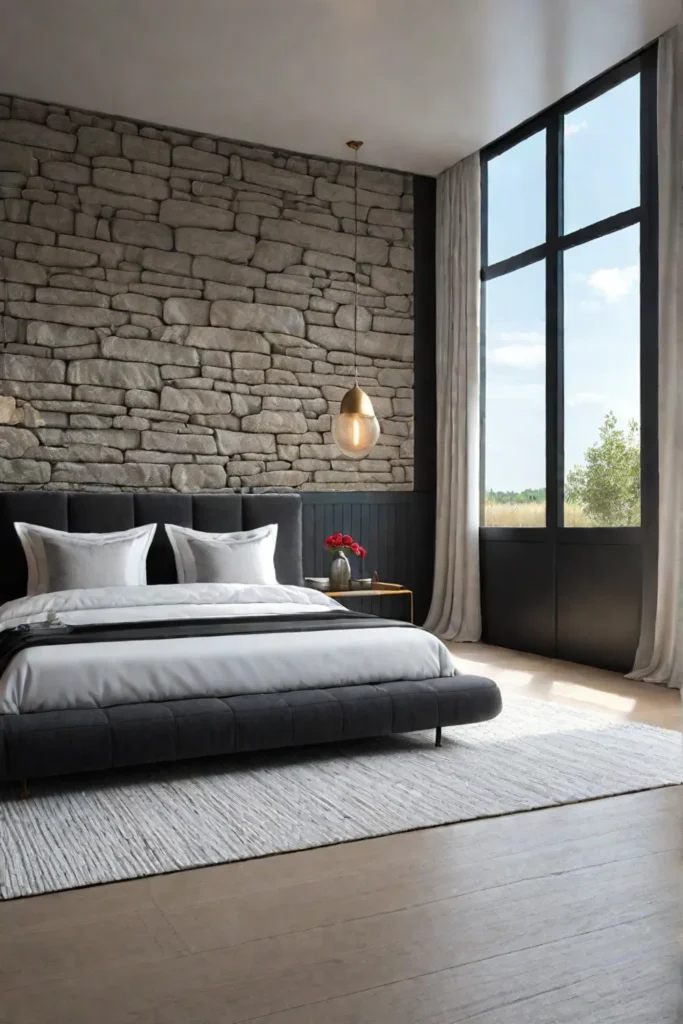
Whether you're a seasoned home decor enthusiast or just starting to dip your toes into minimalist design, this guide will show you how to harness the power of color to transform your bedroom into a serene and rejuvenating retreat. So, let's dive in and explore the secrets to crafting a calming, minimalist bedroom that will refresh and renew you.
Neutral Color Palettes
Neutral color schemes have long been a staple in minimalist bedroom design, offering a timeless and sophisticated aesthetic. These hues, which include whites, beiges, grays, and other neutral tones, can create a sense of tranquility and calmness in a space.
One key benefit of using neutral colors in a minimalist bedroom is their versatility. Neutral colors can be paired with a wide range of colors and textures, making creating a cohesive and harmonious look easy. Additionally, they can be used as a foundation for a space, allowing other design elements to take center stage.
But neutral colors aren't just about versatility - they can also make a space feel more spacious and airy. Light colors, such as soft whites and beiges, reflect light, which can help brighten a room and create more space. This is particularly useful in smaller bedrooms, where dark colors make the space cramped and claustrophobic.
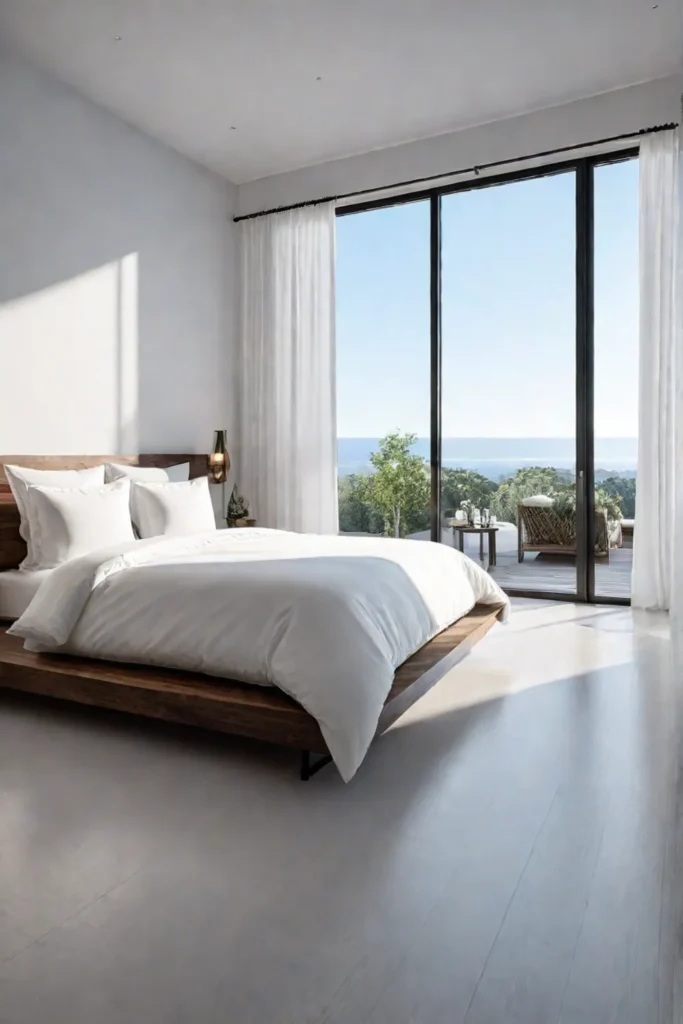
Consider incorporating different shades of neutrals to add visual interest to a neutral palette. Layering various textures, such as linen, wool, and wood, can add depth and dimension to the space. And don't forget to bring in a touch of natural greenery—the calming, organic element can help ground the space and create a serene atmosphere.
Monochromatic Color Schemes
Monochromatic color schemes are a popular choice for minimalist bedroom design, as they can create a cohesive and calming atmosphere. These schemes are based on a single color and its various shades, tints, and tones, resulting in a harmonious and unified look.
Consider the mood you want to create when choosing a monochromatic palette for your bedroom. Cool shades like blues and greens can create a soothing and tranquil environment. Warm tones like reds and yellows can be a better fit for a more energetic and vibrant space.
Experiment with different textures and materials to add depth and visual interest to a monochromatic space. Incorporate a mix of matte and glossy finishes or combine smooth and rough textures. This will prevent your monochromatic bedroom from feeling flat or one-dimensional.
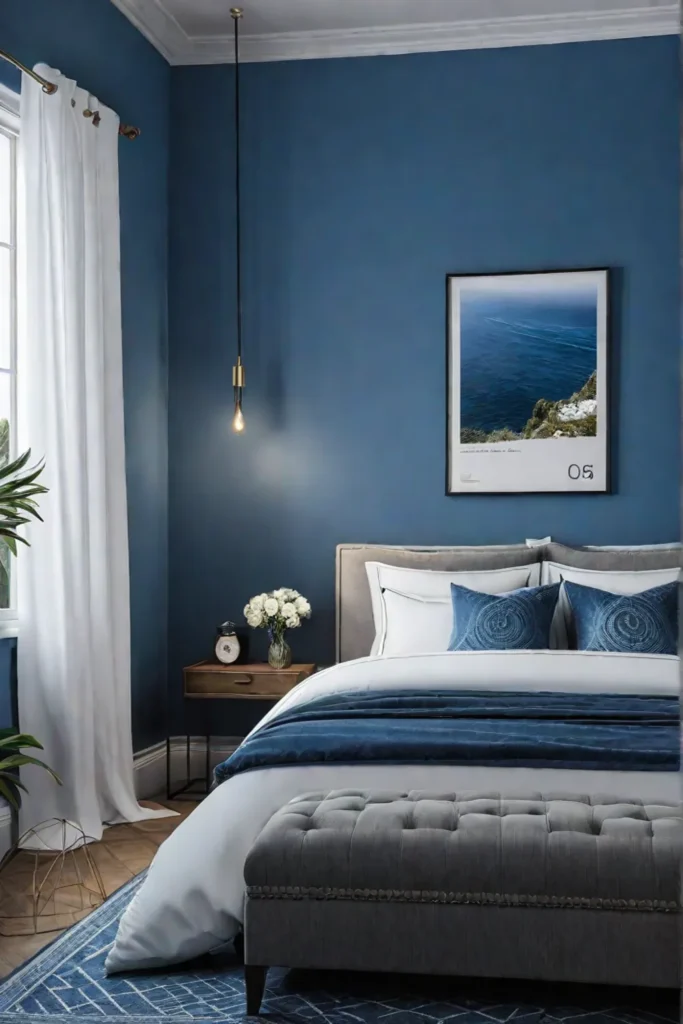
Certain monochromatic palettes, such as shades of blue, can even calm the mind. Studies have shown that people who sleep in rooms with blue walls report a 40% reduction in stress levels. So, a blue-toned monochromatic scheme might be the perfect choice if you want to create a serene and rejuvenating sanctuary.
Accent Colors
While neutral and monochromatic palettes can create a calming, minimalist atmosphere, the strategic use of accent colors can add depth and visual interest to your bedroom. Accent colors can draw the eye to specific focal points in the room, such as a piece of artwork or a unique piece of furniture.
When incorporating accent colors, it's important to strike a balance. You don't want the accent colors to overwhelm the space and disrupt the serene atmosphere you've worked so hard to create. Instead, consider using them in textiles, artwork, or decorative accessories. This will allow the accent colors to add visual interest without dominating the overall design.
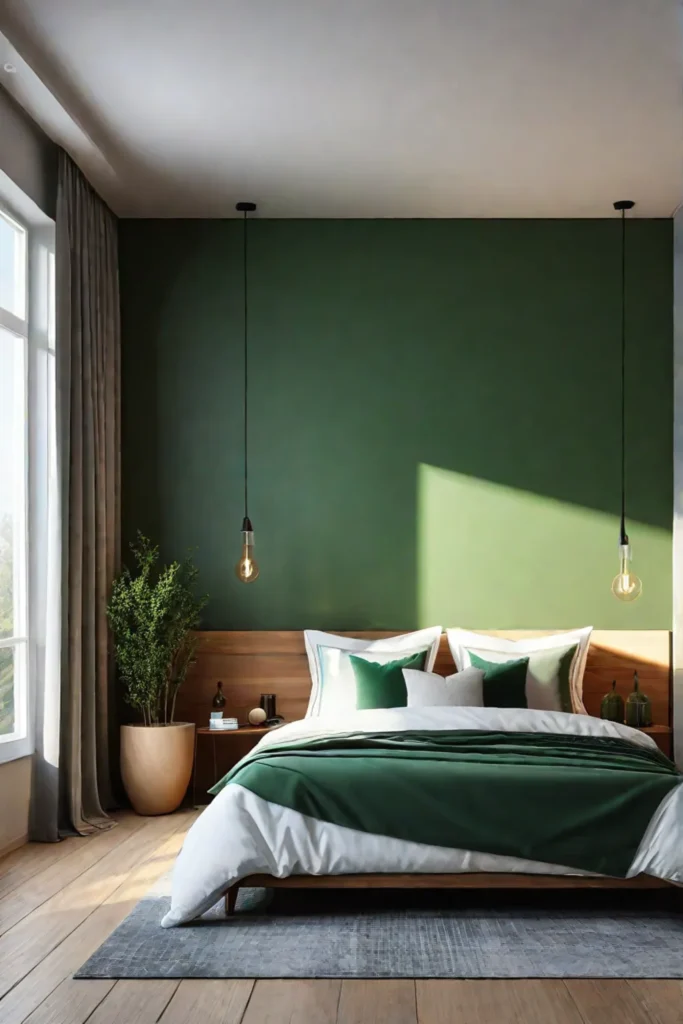
The choice of accent color can also evoke different emotional responses and moods. Warm colors like reds and oranges can create a cozy, inviting atmosphere, while cool colors like blues and greens can promote relaxation and calmness. When selecting your accent colors, be mindful of the atmosphere you want to cultivate in your minimalist bedroom.
Consider using a color wheel to ensure your accent colors complement your neutral or monochromatic palette. This tool can help you identify complementary colors that work well together, providing a harmonious and visually appealing design.
Natural Textures
Incorporating natural textures into your minimalist bedroom design is crucial for creating a serene and tactile environment. These organic elements can add depth, warmth, and visual interest to your space without overwhelming the overall aesthetic.

One of the most popular natural materials used in minimalist bedroom designs is wood. Wooden headboards, nightstands, and flooring can all give the space a sense of warmth and grounding. Stone, another natural material, can be used as an accent wall or a nightstand, adding depth and texture to the room.
Linen is another natural textile that works beautifully in a minimalist bedroom. Its soft, breathable fabric and neutral color palette make it an excellent choice for bedding, curtains, or upholstery. Linen's natural texture can add a cozy and inviting element to your minimalist sanctuary.
Consider layering different materials and finishes to integrate natural textures into your minimalist bedroom seamlessly. For example, you could combine a wooden headboard with linen bedding and a stone accent wall. This will create a visually interesting and cohesive look while maintaining the calming, minimalist aesthetic.
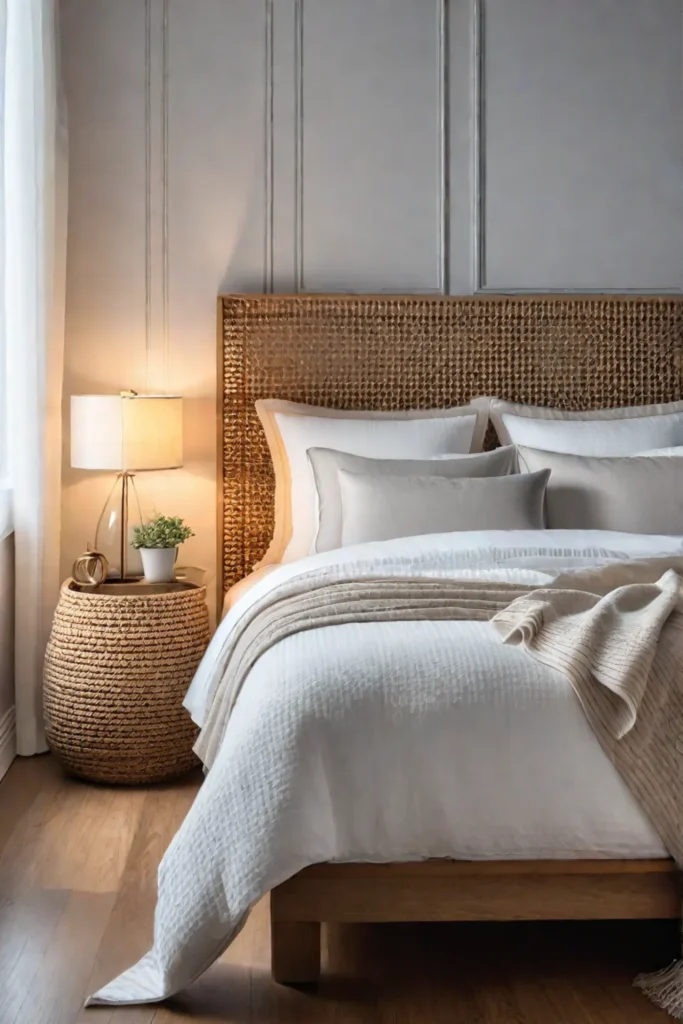
Studies have shown that exposure to natural textures can positively impact mental well-being. Natural materials are often associated with feelings of warmth and grounding, which can help reduce stress and promote relaxation. You can create a truly serene and rejuvenating space by incorporating various organic elements into your minimalist bedroom.
Light and Space
In a minimalist bedroom, the strategic use of light and space can profoundly impact the overall atmosphere. Proper natural or artificial lighting can significantly influence mood and well-being while maximizing the perception of space can contribute to a calming and rejuvenating environment.
Maximizing natural light is an effective way to enhance your bedroom's minimalist aesthetic. Large windows or glass doors can flood the space with light, creating a sense of openness and serenity. This can have a positive impact on your mood and sleep quality, as studies have shown that exposure to natural light during the day can help regulate the body's natural sleep-wake cycle.
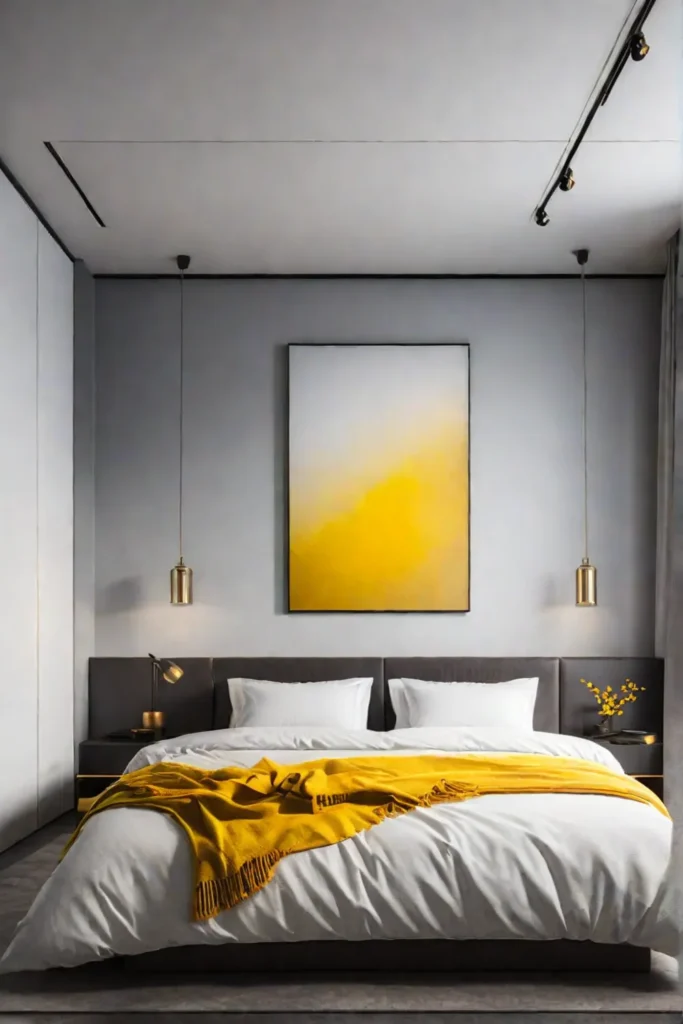
Alongside natural light, carefully placed artificial lighting can also play a crucial role in creating a cohesive, well-lit space. You can balance light and shadow by strategically positioning lighting fixtures, adding depth and visual interest to your minimalist bedroom without disrupting the overall aesthetic.
But it's not just about the lighting - how you utilize the available space in your bedroom can also contribute to a calming atmosphere. Minimalist design principles often focus on creating a sense of spaciousness and airiness, which can be achieved through light colors, open layouts, and the strategic placement of furniture.
By optimizing the use of light and space in your minimalist bedroom, you can create a serene and rejuvenating sanctuary that promotes relaxation and well-being. Whether you're drawn to the soft, natural glow of a sun-filled room or the warm, cozy ambiance of a carefully lit space, the thoughtful integration of these elements can transform your bedroom into a true oasis of calm.
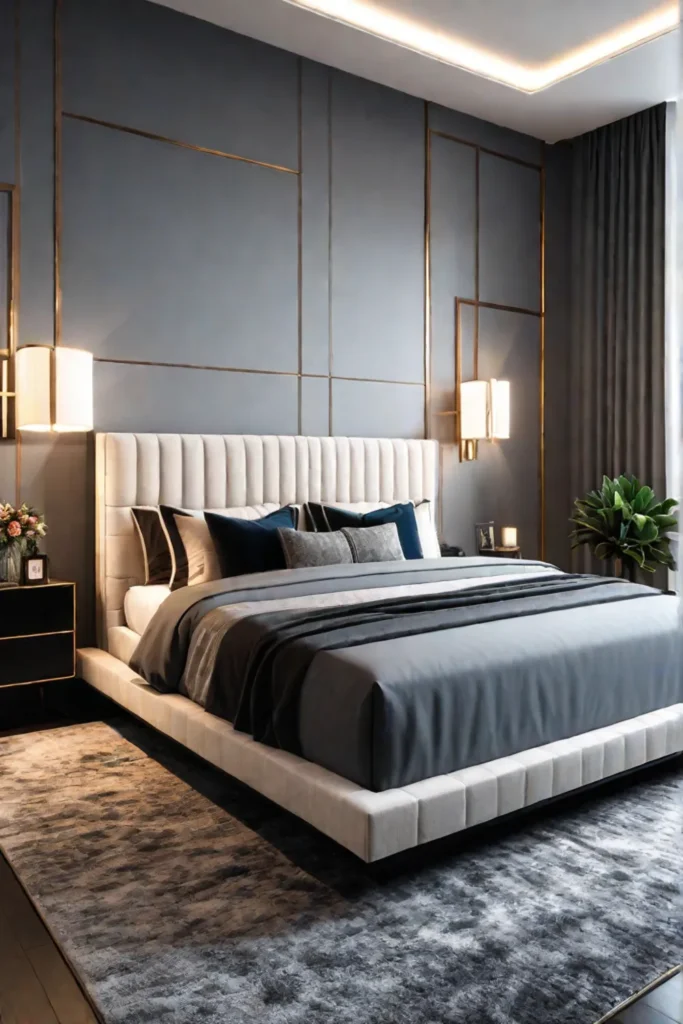
Conclusion
In our bustling world, creating a serene and rejuvenating personal sanctuary has become more important than ever. When it comes to minimalist bedroom design, the strategic use of color, natural textures, and the interplay of light and space can profoundly impact the overall atmosphere.
By incorporating a calming, neutral color palette, you can establish a foundation of tranquility in your bedroom. Experiment with monochromatic schemes to cultivate a cohesive and harmonious look, and don't be afraid to add pops of accent color to create visual interest without disrupting the serene ambiance.
Integrating natural textures like wood, stone, and linen can also contribute to a sense of warmth and grounding in your minimalist space. These organic elements not only add depth and visual interest but can also positively impact your mental well-being, promoting relaxation and reducing stress.

Finally, the thoughtful use of light and space can elevate your minimalist bedroom into a calming oasis. Maximize natural light, balance artificial lighting, and create a sense of openness and airiness to foster a rejuvenating environment that will have you feeling refreshed and renewed.
So, if you're ready to transform your bedroom into a serene, minimalist sanctuary, start by considering the power of color, texture, light, and space. With a little creativity and a focus on creating a calming atmosphere, you can cultivate a personal retreat that will make you feel truly at peace.

